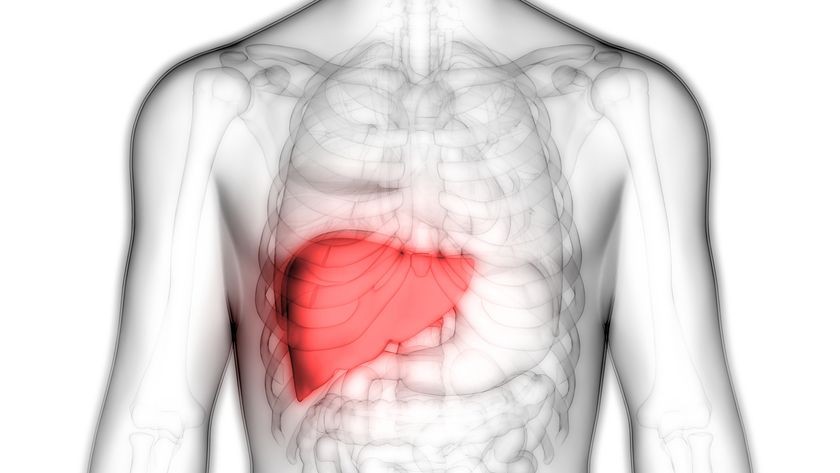
What You Need to Know about Liver Cancer

If you have liver cancer, or care about someone who does, learning about the disease can help you cope.
Cancer is a condition in which cells in the body grow out of control. Cancer cells can grow anywhere in the body, so cancer can begin in any organ or tissue. Cancer can even spread to other tissues and organs, a process known as metastasis. Liver cancer begins in the liver, for example, but liver cancer cells can spread to other parts of the body during liver metastasis.
Doctors diagnose about 42,220 new cases of liver cancer each year, according to the American Cancer Society, and liver cancer claims about 30,200 lives annually. The incidence of the disease has more than tripled since 1980.
Liver cancer is often carcinoma, which is a type of cancer that starts in the tissue lining the liver. Liver cancer can also affect the bile duct, which carries the bile made by the liver into the stomach.
Liver cancer can be primary or metastatic. Primary liver cancer starts in the liver, and may spread to other organs or tissues of the body. Metastatic liver cancer is a tumor or cells that develop in another place in the body and then spread to the liver. Liver tumors can be malignant (cancerous) with the potential of spreading to other organs and tissues, or benign (non-cancerous) lesions that do not spread.
Doctors often describe the spread of cancer in stages, with stage 1 cancer being confined to the liver and stage 4 cancer having spread to lymph nodes and tissues far away from the liver.
To understand liver cancer, it helps to know about the liver and its function. The liver is your body’s largest internal organ. About the size of a football, the liver weighs about 3.5 pounds and measures about 8 inches across, 6.5 inches down, and about 4.5 inches thick. It sits just below your right rib cage, just below your right lung.
The liver contains several types of cells, but doctors refer to the main type of liver cell as “hepatocytes,” which is why many words referring to the liver begin with “hepa-” or “hepato.” In fact, the most common type of liver cancer is hepatocellular carcinoma, which is cancer of the hepatocytes.
The liver performs many important jobs, such as cleaning toxins from the blood, making bile that helps the body digest fat, and making substances to help the blood clot to stop bleeding. The liver also makes, stores, and releases sugar your body uses as energy. Liver cancer affects the liver’s ability to perform these functions.
Risk Factors for Liver Cancer
Certain factors can increase the risk of liver cancer. These risk factors include:
- Having hepatitis B or C, caused by exposure to a virus
- Heavy alcohol use
- Scarring of the liver, known as cirrhosis
- Having hemochromatosis, a condition where too much iron builds up in the liver
Signs and Symptoms of Liver Cancer
In its early stages, primary liver cancer may not cause symptoms. When liver cancer does cause symptoms, the symptoms may include:
- Unintentional weight loss
- Loss of appetite
- Nausea and vomiting
- Pain in the upper abdomen
- Abdominal swelling
- General weakness and fatigue
- Yellow discoloration of your skin and the whites of your eyes, known as jaundice
- Chalky, white stools
Diagnosis of Liver Cancer
Doctors use a variety of tests to diagnose liver cancer:
- Blood tests – may reveal liver dysfunction
- Biopsy – the removal of a small sample of liver tissue for testing
- Imaging – ultrasound, computerized tomography (CT), magnetic resonance imaging (MRI)
Once a doctor has diagnosed liver cancer, he or she will work to assess the extent of the disease. Staging tests help determine the size and location of the cancer, and whether it has spread. Doctors rely on further imaging tests to “stage” the cancer.
Treatment of Liver Cancer
Treatment of primary liver cancer depends largely on the stage of the disease, the age of the patient, his or her overall health and according to his or her personal preferences. Treatment may include:
- Surgery to remove the tumor and a small amount of tissue near the tumor; usually performed if the liver cancer is small and you otherwise have good liver function
- Liver transplant surgery to replace your liver with a healthy liver from a donor; an option for a small percentage of patients
- Localized treatments that heat or freeze tumor
- Chemotherapy
- Radiation therapy that uses high-powered x-rays and protons to destroy cancer cells and shrink tumors
Doctors often use imaging tests to determine how well the cancer responds to treatment, and to determine if the cancer is spreading despite treatment.
For more information on liver cancer, speak with a healthcare professional with experience in the diagnosis and treatment of liver cancer.




